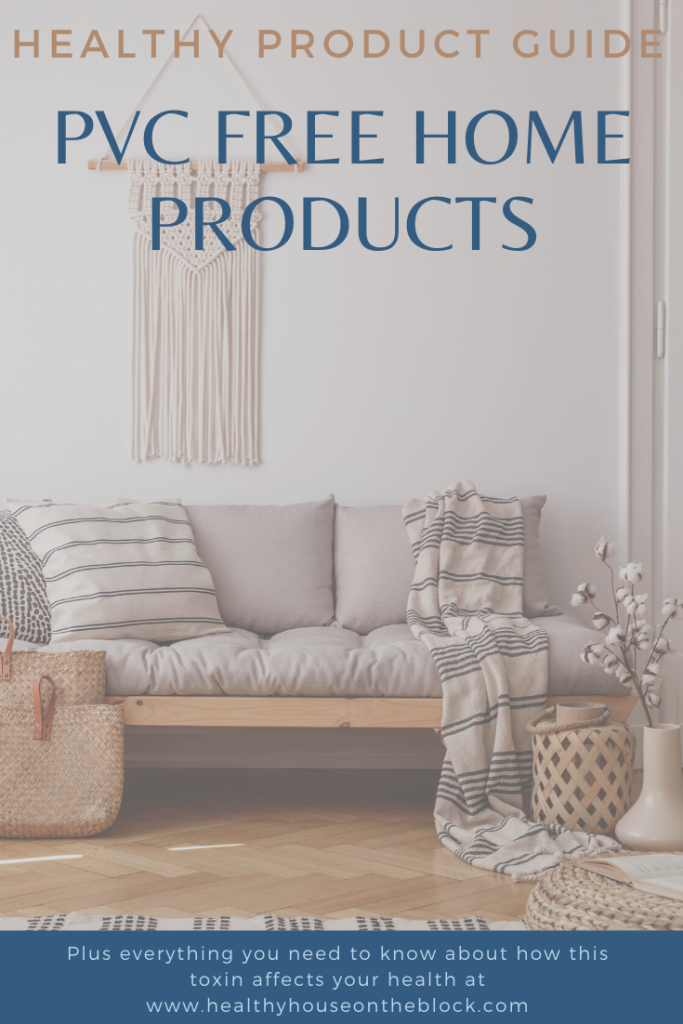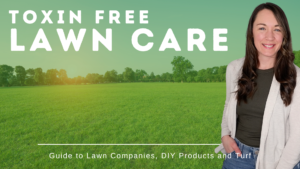
You’ve probably heard plenty of snippets here and there about polyvinyl chloride and PVC toxins when it comes to products or materials around your house. PVC is a widely used type of plumbing pipe in homes and PVC is used in many other materials and products around the home.
But what even IS PVC? And what REALLY is the problem with it? For a long time I knew it was harmful, but I had never stopped to do the research as to WHY it was harmful. I knew there were toxins in polyvinyl chloride, PVC, but I didn’t know what they were. Maybe that’s where you’re at too?
It can be easy to just assume something’s harmful to our health, or even to KNOW, but to know WHY will give you the understanding you need to remove make positive changes and stick with those changes.
This is exactly why I started sharing my deep dive posts into toxins like PVC toxins. I think it’s helpful to not only understand what makes these materials toxic, but also how they’re affecting our families at the same time.
Let’s dive in and really get to know polyvinyl chloride and pvc toxins within your home.
WHAT ARE PVC TOXINS?
PVC toxins, or polyvinyl chloride is a type of plastic. Commonly known as vinyl, it is one of THE most widely used plastics in our society.
Chlorine is one of the biggest components within PVC that makes it a toxic material. PVC toxins such as chlorine not only have HUGE environmental effects, but they also have a wide array of health effects, which I’ll mention in the next section.
Another one of the main PVC toxins is Dioxin. Dioxin is unintentionally created whenever a chlorine-based chemical is produced, used or burned. There is evidence, however, that Dioxin is actually IN the polyvinyl chloride material and never leaves the product.
Phthalates are also added to many types of polyvinyl chloride as another PVC toxin to add to our list. Phthalates, which I dove into DEEP a few weeks ago, are linked to abnormal reproductive development, neurological toxicity, and hormone disruption.
Because plastic and vinyl are such complex materials with a variety of different additives, it’s even possible to get a polyvinyl chloride product that contains lead or cadmium, which are poisonous, especially in children as the toxins accumulate in their system.

HEALTH EFFECTS OF PVC (POLYVINYL CHLORIDE)
We come into contact with PVC toxins in three different ways. This is true of most environmental toxins that are present in our home and world.
First, and the most harmful way is through ingestion. Swallowing food or water that is contaminated with PVC, wrapped in PVC packaging or stored in PVC containers.
The second most harmful way is through inhalation. PVC on various products throughout the home can end up producing fine amounts of dust that end up on our surfaces and in our HVAC systems. Once the dust is airborne, it easily enters our lungs through inhalation.
And the final way you come into contact with polyvinyl chloride is through touching products that are made with PVC. This is especially true of children’s toys and products that are often plastic or vinyl.
Exposure to PVC toxins and polyvinyl chloride means there is also exposure to phthalates. If you were around for my blog post about a month ago, I covered Phthalates in a deep dive blog post. I shared all kinds of studies linking phthalates to abnormal reproductive development and neurological toxicity in both kids and adults. I also shared the harmful effects when it comes to prenatal exposure and the endocrine system.
A long term study on childhood obesity made the direct link between the additives in polyvinyl chloride products that kids are in contact with and the negative health effects they have on children, specifically ages 4-11. Because these PVC toxins are endocrine disruptors, or they alter the natural hormone production, they also play a role in childhood obesity. (STUDY)
PVC toxins also contain synthetic estrogen and other hormone disrupting agents that play a huge role in not only disruption of the entire endocrine system, but have also been linked to cancer. (STUDY)
WHO IS AT THE HIGHEST RISK FOR HEALTH EFFECTS FROM PVC TOXINS?
When we’re talking about kids and babies, exposure to PVC toxins begins in the womb, through the mother’s exposure to polyvinyl chloride products. Babies then will ingest chemicals through breast milk and other items that have had contact with PVCs in their environment. Because an infant and fetus are rapidly developing, young children are more susceptible to PVC toxins in terms of brain development and function.
Kids also pose a higher risk due to the fact that per pound, kids take in more air and food than an adult. This means toxin concentrations are much higher in kids than compared to adults. Kids also have hand to mouth habits that expose them to more chemicals in general, including PVC toxins. They spend much of their time playing on the ground, touching various objects and mouthing toys and other materials. This leads to direct ingestion of these chemicals. (CHEJ Fact Sheet)

PRODUCTS THAT CONTAIN PVC TOXINS IN OUR HOMES
The list of items that contain PVC toxins in our homes is a LONG one. While PVC has been banned from children’s toys and products (PVC Policies), there are still plenty of sources within our homes that PVC toxins still exist.
- Flooring
- Water Piping
- Carpet Backing
- Shower Curtains
- Strollers
- Car Seats
- Mattress Covers
- Modeling Clay
- Straws
- Plastic Snack Bags
- Food Storage Containers
- Kids’ Swimming Pools
- Rain Gear
- Diaper Bags & Backpacks with Rain Protective Coating
- Vinyl Window Shades
- Vinyl Window Frames
- Cleaning Product Containers
- Plastic Utensils
- Plastic Tablecloths
- High Chairs

HOW TO AVOID POLYVINYL CHLORIDE AT HOME
Trying to remove plastic from your home can be a REALLY big undertaking. Not to mention it’s probably not something you can do all at once or afford to do all at once.
Instead, take the approach to replace just one thing at a time. Looking at the list above, I bet you started thinking of your own house and the places that polyvinyl chloride products are hiding.
Each time you were GOING to purchase a new set of snack bags, buy a set of reusable silicone ones instead. Eventually you’ll slowly replace each of these items in your home.
Things like flooring, windows and water piping may be something that doesn’t get changed for quite a while down the road, but just know that by changing these other items, you’re going to be improving your toxin load.
Also, be on the lookout for items that have the recycle labels on them. A PVC or V indicates the item is made of or contains polyvinyl chloride.
Below are some of the items I LOVE instead of plastics that contain pvc toxins and polyvinyl chloride:




HOME MATERIALS:
What if you were to change just a few things from this list in your own home? Could you imagine the benefit of unburdening your home and your body with these simple swaps? Changing your home to be less toxic is TOTALLY doable. It’s simply making small changes that add up to a huge impact a difference in your home.
Share this:
- Click to share on Facebook (Opens in new window) Facebook
- Click to share on LinkedIn (Opens in new window) LinkedIn
- Click to share on Reddit (Opens in new window) Reddit
- Click to share on Pinterest (Opens in new window) Pinterest
- Click to print (Opens in new window) Print
- Click to share on X (Opens in new window) X




Pingback: Home Toxins based on the Age of Your Home (new or old home)
Pingback: How Your Body Will Heal from a Home Detox »
Pingback: Healthy Homes Create Healthy Kids
Pingback: From Dishwashers to Dishsoap: A Healthy House Approved Approach - Healthy House on the Block
Pingback: Healthy Windows: Best Windows | Toxin Free Blinds | Organic Curtains - Healthy House on the Block